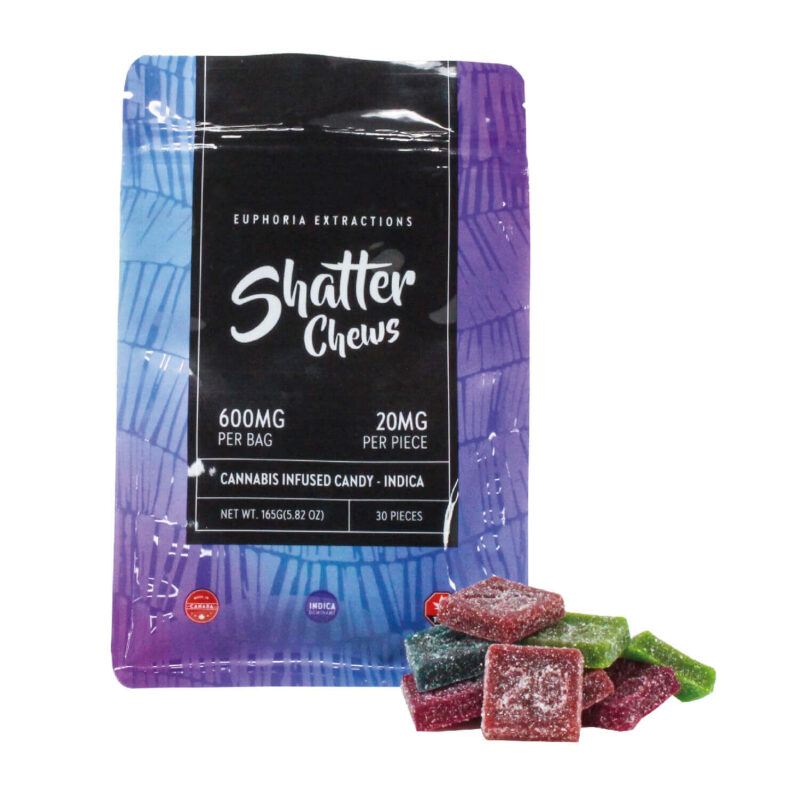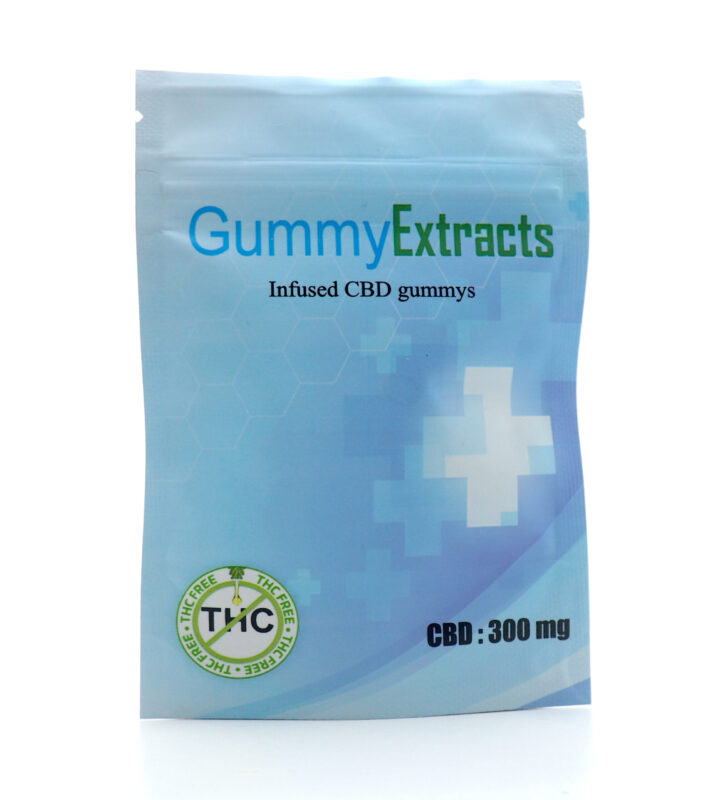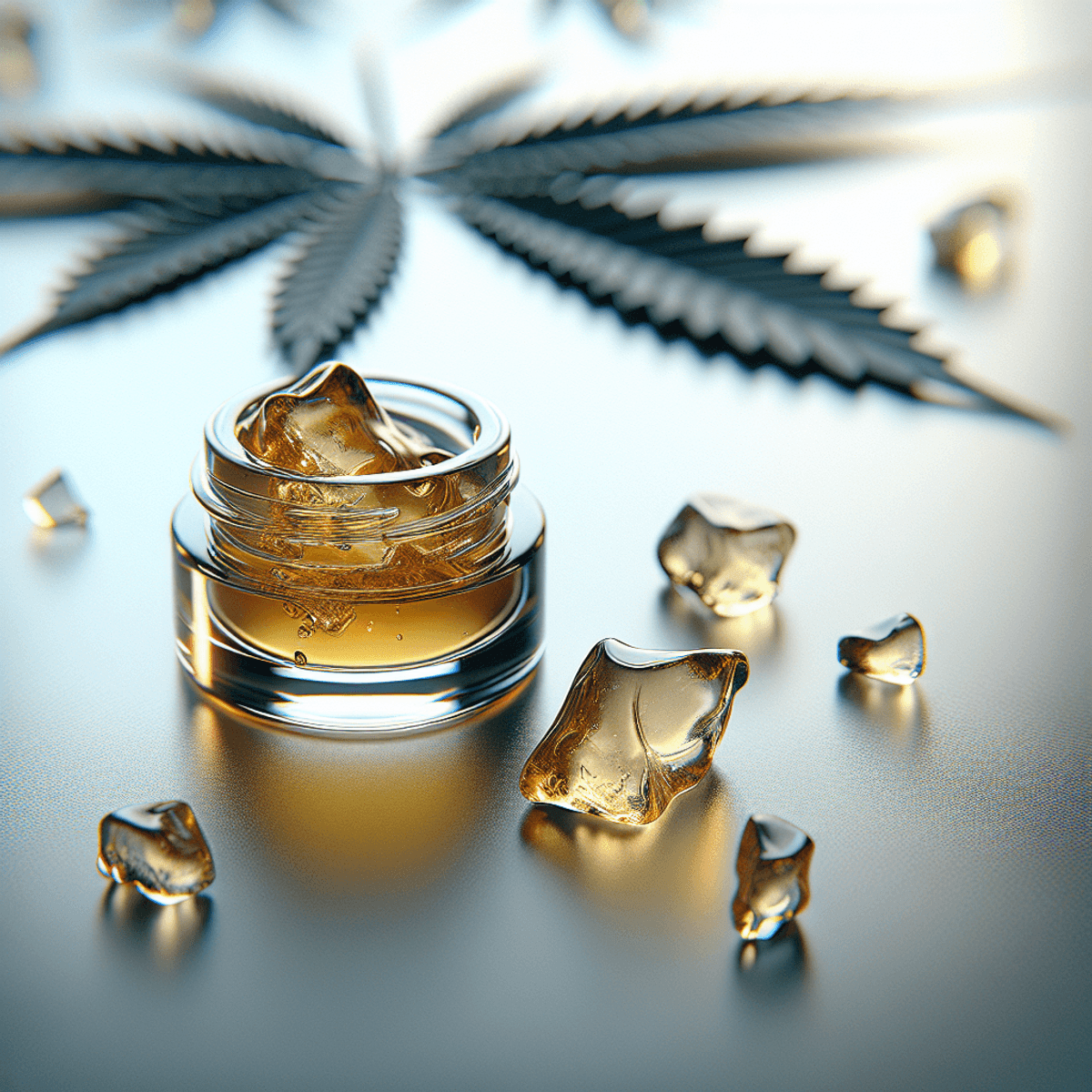Introduction to Shatter
Shatter is a highly potent cannabis concentrate known for its glass-like texture and brittle consistency. This extract typically contains THC levels ranging from 60% to 80%, making it significantly stronger than traditional cannabis flower. The production process of shatter utilizes solvents, primarily butane, to extract the cannabinoids from the plant material, resulting in a refined product that is both visually appealing and effective.
The Origins of Shatter
The origins of shatter can be traced back to the 1990s underground cannabis scene. As cannabis enthusiasts sought higher potency and more refined consumption methods, shatter emerged as a favored choice among those experimenting with concentrates. Initially circulated within niche circles, it slowly gained traction as access to cannabis products expanded.
The Rise in Popularity of Shatter
With the legalization of cannabis in various regions, shatter’s popularity surged. Consumers became increasingly interested in exploring high-potency options, leading to a broader acceptance of concentrates. Dispensaries now offer a variety of shatter products, catering to both recreational users and medical patients seeking effective relief through concentrated forms of THC. The allure of shatter lies in its powerful effects and unique characteristics, which continue to attract a diverse audience within the evolving cannabis landscape.
If you’re interested in learning more about shatter or seeking high-quality products, feel free to explore our offerings at Shatter Online Canada. For any inquiries or further information, don’t hesitate to reach out through our contact page.
Properties of Shatter
Shatter possesses distinct properties that set it apart from other cannabis concentrates.
1. Texture
Characterized by its glass-like structure, shatter is known for its brittle consistency. This unique texture allows it to easily break into shards, hence the name “shatter.” When handled at room temperature, it exhibits a smooth and clear appearance, often described as translucent. The quality of shatter can be visually appealing, enhancing its desirability among consumers.
2. Color Variations
The appearance of shatter ranges notably in color, typically presenting shades from golden yellow to amber. These variations can indicate differences in the extraction process or the specific strain used. A lighter golden hue generally suggests a purer product, while darker amber shades might result from residual plant material or different terpene profiles.
3. THC Potency
One of the most significant aspects of shatter is its high THC content, which typically ranges from 60% to 80% THCa. This substantial potency means that only a small amount is necessary to achieve the desired effects. For many users, even a fraction of a gram can lead to intense psychoactive experiences. This concentration not only enhances the overall effects but also influences the onset duration and intensity.
Shatter’s unique texture, appealing color variations, and high THC levels contribute to its popularity as a potent cannabis concentrate. These properties make it an attractive option for both recreational and medicinal users looking for an enhanced cannabis experience.
Production Process of Shatter
The production of shatter primarily involves the use of Butane Hash Oil (BHO) extraction. This method has gained popularity due to its efficiency in extracting cannabinoids and terpenes from cannabis plants, resulting in a potent concentrate.
Butane Hash Oil (BHO) Extraction Method
Closed Loop System: BHO extraction utilizes a closed-loop system where chilled butane acts as the solvent. The process begins by packing cannabis material into a column.
Extraction Phase: Chilled butane is introduced to the column, where it interacts with the plant material. This interaction allows for the separation of THC-rich trichomes from the plant.
Evaporation: Following extraction, the butane solution, now containing concentrated cannabinoids and terpenes, is collected and subjected to heat. This step evaporates the butane, leaving behind a thick, sticky oil.
For those unfamiliar with this method, it’s worth exploring this beginner’s guide to Butane Hash Oil which provides comprehensive insights into the process.
Vacuum Purging Process
To ensure safety and purity, a vacuum purging process is essential. This step removes any remaining solvents and impurities:
Vacuum Chamber: The extracted oil is placed in a vacuum chamber where heat and reduced pressure work together to purge residual butane.
Purification: Through this process, the final product becomes purified and free from harmful substances, enhancing its safety for consumption.
Preserving Terpenes
Terpenes play a crucial role in defining the flavor profile of shatter. During extraction:
Temperature Control: Maintaining appropriate temperatures is vital to preserve these aromatic compounds. Excessive heat can lead to terpene degradation.
Flavor Contribution: Preserved terpenes not only contribute to flavor but also enhance the overall experience by providing additional therapeutic benefits associated with various strains.
Understanding this production process reveals how shatter achieves its unique characteristics while ensuring safety through purification methods. The meticulous approach taken during extraction helps create a product that appeals to both recreational users and medical patients alike.
Consumption Methods for Shatter
Shatter can be enjoyed through several methods, each offering a unique experience. The most popular consumption techniques include:
Dabbing
Adding to Flower
Making Edibles
Dabbing
Dabbing is the preferred method for many enthusiasts due to its potency and rapid onset of effects. This technique involves vaporizing shatter using a specialized device known as a dab rig or a dab pen.
1. Dab Rig
A dab rig resembles a traditional bong but is specifically designed for concentrates. It typically includes:
A water chamber for filtration
A nail (often quartz, titanium, or ceramic) that heats up when a torch is applied
A dome that captures vapor
Users place a small amount of shatter on the heated nail, which instantly vaporizes the concentrate. Inhaling the resulting vapor provides an intense experience due to the high THC content.
2. Dab Pen
A more portable option, dab pens feature a battery-powered heating element that vaporizes the shatter quickly. These devices are user-friendly and convenient for on-the-go consumption.
Adding to Flower
Another method involves incorporating shatter into traditional flower for enhanced effects. This can be done by:
Crumbling shatter over ground flower in a joint or bowl.
“Twaxing,” where shatter is rolled into the joint before smoking.
This approach allows consumers to enjoy both the flavors and effects of both flower and shatter simultaneously.
Making Edibles
For those who prefer edibles, understanding the decarboxylation process is essential. Raw THCa in shatter must be converted into psychoactive THC through heat exposure.
Decarboxylation Process
To decarboxylate shatter, follow these steps:
Preheat an oven to approximately 240°F (115°C).
Spread shatter on a baking sheet lined with parchment paper.
Bake for about 30-40 minutes.
After decarboxylation, users can infuse decarboxylated shatter into oils or butters, creating potent edibles that provide longer-lasting effects compared to other methods.
Each technique offers distinct advantages, catering to varying preferences and experiences among cannabis users.
Safety and Precautions
Caution is essential for those new to shatter due to its high potency. Shatter typically contains THC concentrations ranging from 60% to 80%, making it significantly stronger than traditional cannabis flower. Beginners may experience intense effects even with small quantities, leading to overwhelming sensations that can be uncomfortable or disorienting.
Potential Risks of Dependence
The use of shatter can lead to tolerance, where users require increasingly larger doses to achieve the same effects. This escalation can foster dependence, resulting in challenges when attempting to reduce or cease usage. Withdrawal symptoms associated with high-potency concentrates may include:
Restlessness
Sleep difficulties
Decreased appetite
Irritability
Physical discomfort
Understanding these potential withdrawal symptoms is crucial for responsible consumption.
Monitoring Usage
Monitoring one’s use of shatter helps avoid interference with daily activities. Establishing a routine that incorporates breaks between uses can mitigate risks associated with dependency and tolerance buildup. It is advisable for users to keep track of their consumption patterns, noting any changes in mood or behavior that may signal excessive use.
Recognizing personal limits and listening to one’s body fosters a more enjoyable experience while minimizing adverse effects associated with high-potency cannabis products. Prioritizing safety and moderation enhances the overall enjoyment of shatter without compromising well-being.
Medical Benefits of Shatter
Shatter, a potent cannabis concentrate, has garnered attention for its potential medical benefits. Its high THC content makes it a valuable option for those seeking relief from various health concerns.
1. Chronic Pain Relief and Appetite Stimulation
Medical marijuana patients often turn to shatter for its effectiveness in alleviating chronic pain. The concentrated form of THC can provide significant relief for conditions such as arthritis, fibromyalgia, and neuropathy. Additionally, shatter may stimulate appetite in patients undergoing treatments like chemotherapy, where nausea and loss of appetite are common side effects.
2. Neuroprotective Properties and Anti-Inflammatory Effects
Research suggests that cannabinoids found in shatter may possess neuroprotective properties. These compounds can potentially aid in protecting brain cells from damage caused by neurodegenerative diseases such as Alzheimer’s or Parkinson’s. The anti-inflammatory effects of shatter can contribute to managing conditions characterized by inflammation, including autoimmune disorders and inflammatory bowel disease.
3. Consideration for Patients with Specific Medical Conditions
Before incorporating shatter into a treatment plan, patients should consult healthcare professionals familiar with cannabis medicine. Individual health conditions may necessitate tailored dosing and methods of consumption to maximize therapeutic effects while minimizing adverse reactions.
The unique properties of shatter make it an intriguing option within the spectrum of medical cannabis products. Understanding its benefits can help patients make informed choices regarding their health management strategies.
Risks Associated with High-Potency Concentrates
Cannabis concentrates, such as shatter, present several risks due to their high potency. Users should be aware of these potential adverse effects, which may include:
1. Psychotic Symptoms and Mental Health Issues
Research indicates that high levels of THC can exacerbate or trigger underlying mental health conditions. Symptoms may include anxiety, paranoia, and in severe cases, psychotic episodes. Those with a history of mental illness should exercise caution.
2. Cannabis Hyperemesis Syndrome (CHS)
A relatively rare condition associated with chronic cannabis use, CHS is characterized by recurrent bouts of severe nausea and vomiting. Individuals affected may find relief only through hot showers or baths. This syndrome highlights the need for users to monitor their consumption patterns closely.
3. Cannabis Use Disorder/Dependence Risks
Regular use of high-potency concentrates like shatter can lead to increased tolerance, prompting users to consume larger quantities to achieve the desired effects. This escalation can develop into dependence or a full-blown disorder, resulting in withdrawal symptoms such as irritability, sleep disturbances, and decreased appetite when not using.
Understanding these risks is crucial for anyone considering the use of shatter or similar products. Educating oneself about safe consumption practices and recognizing personal limits will aid in mitigating potential negative outcomes associated with high-potency cannabis concentrates.
Legal Status of Shatter
The legal landscape surrounding cannabis concentrates, including shatter, varies significantly across the United States. Understanding the relationship between federal and state laws is crucial for consumers and patients alike.
Federal vs State Laws
Cannabis remains classified as a Schedule I substance under the Controlled Substances Act at the federal level. This designation prohibits its use and possession, creating a complex dichotomy with state laws.
Many states have enacted legislation permitting both medical and recreational cannabis use, effectively allowing dispensaries to sell products like shatter legally within their jurisdictions. The inconsistency between federal prohibitions and state legalization creates confusion for consumers regarding legality and access.
Impact on Dispensary Sales
States that have legalized cannabis create an environment where dispensaries can thrive, catering to both recreational users and medical patients. The availability of shatter in these markets has increased due to growing consumer interest in high-potency concentrates.
Medical patients often rely on dispensaries for access to specific formulations that can provide relief from chronic pain or other conditions. Recreational consumers enjoy the versatility and potency that shatter offers, contributing to its popularity.
THCA vs THC
A critical distinction exists between THCA (tetrahydrocannabinolic acid) and THC (tetrahydrocannabinol). THCA is non-psychoactive and is present in raw cannabis plants. It does not produce the “high” associated with THC.
Upon heating or decarboxylation, THCA converts into THC, which possesses psychoactive properties. Understanding this difference is essential for consumers seeking specific effects from cannabis products. This distinction also affects legal considerations, as some states allow THCA-rich products while restricting those containing THC.
Navigating the legal status of shatter requires awareness of local regulations and product types available.
FAQs About Shatter Consumption
Understanding common questions about shatter consumption can enhance safety and enjoyment.
1. Why is shatter ineffective when eaten without decarboxylation?
Consuming shatter directly in its raw form will not produce the desired psychoactive effects. This is due to the presence of THCA, which must undergo decarboxylation—a process typically achieved through heat—before it becomes THC, the compound responsible for the high.
2. What are the dangers associated with home production using butane?
The process of making shatter at home using butane can be hazardous. Butane is highly flammable and toxic; improper handling can lead to explosions or severe health risks. It is crucial to emphasize that amateur production should be avoided entirely, as trained professionals in regulated environments are best equipped to handle these processes safely.
3. How does shatter differ from other types of dabs?
Shatter distinguishes itself from other cannabis concentrates like wax or crumble primarily through its texture and consistency. While shatter has a glass-like appearance and brittle structure, wax tends to be softer and more malleable, whereas crumble has a crumbly texture. Each type offers unique characteristics that cater to various preferences in consumption methods.
Understanding these aspects ensures responsible use and enhances the overall experience with cannabis concentrates like shatter.
Conclusion: Enjoying Shatter Responsibly
Engaging with shatter can be a rewarding experience when approached with responsibility. Key considerations for safe consumption include:
Start Slow: New users should begin with small amounts to gauge their tolerance and avoid overwhelming effects.
Prioritize Safety: Understanding personal limits and recognizing the potent nature of shatter is crucial. Awareness of potential withdrawal symptoms and dependence risks should guide usage.
Consult Professionals: Engaging with knowledgeable staff at dispensaries can provide valuable insights into consumption methods, product selection, and safety tips.
By adhering to these guidelines, users can enhance their enjoyment while minimizing risks associated with high-potency cannabis concentrates. For further information on safe practices, visit shatteronlinecanada.com.
FAQs (Frequently Asked Questions)
What is shatter?
Shatter is a cannabis concentrate known for its glass-like texture and high potency, typically containing 60-80% THC. It originated in the 1990s underground cannabis scene and gained popularity following the legalization of cannabis.
How is shatter produced?
Shatter is primarily produced using the butane hash oil (BHO) extraction method, which involves extracting cannabinoids from cannabis using butane. The process includes vacuum purging to remove solvents and impurities while preserving terpenes for flavor.
What are the consumption methods for shatter?
Shatter can be consumed in several ways, including dabbing with dab rigs or pens, adding it to flower, or making edibles. When making edibles, it’s essential to decarboxylate the shatter to activate its psychoactive properties.
What safety precautions should beginners take when using shatter?
Beginners should exercise caution due to shatter’s high potency. It’s important to monitor usage to avoid dependence issues and potential withdrawal symptoms. Starting slow and being aware of how it affects daily activities is crucial.
What medical benefits does shatter offer?
Shatter may provide various medical benefits, such as relief from chronic pain, appetite stimulation, and potential anti-inflammatory effects. It may also have neuroprotective properties but should be considered carefully for patients with specific medical conditions.
Are there risks associated with high-potency concentrates like shatter?
Yes, high-potency concentrates can lead to psychotic symptoms, Cannabis Hyperemesis Syndrome (CHS), and risks of cannabis use disorder. Users should be aware of these potential mental health issues and consume responsibly.








